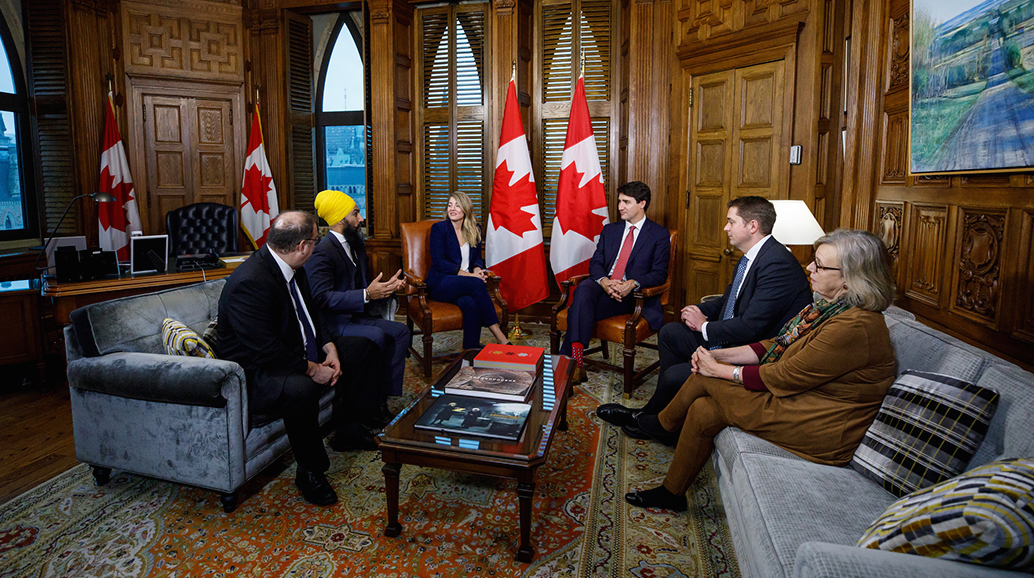At the outset of the 2019 federal election, party leaders were found campaigning in NDP ridings.
After meeting with the governor-general, and addressing the national media at Rideau Hall, Justin Trudeau flew west to campaign in the Vancouver Kingsway riding held by New Democrat Don Davies.
Conservative Leader Andrew Scheer launched his campaign in Trois-Rivières, where Robert Aubin is an NDP MP seeking a third term.
Elizabeth May welcomed the media in Victoria where a seat has opened following the retirement of constitutional expert Murray Rankin of the NDP.
Bloc Québécois Leader Yves-François Blanchet is looking to be elected for the first time in an NDP riding held by Matthew Dubé since 2011.
NDP Leader Jagmeet Singh launched his campaign in London-Fanshawe where Lindsay Mathyssen is running to replace her mother, retiring NDP MP Irene Mathyssen.
CBC aggregate poll tracking at election time showed the NDP at less than 15 per cent support, down from 19.7 per cent in the 2015 election. Other parties looking to make up ground were eager to campaign directly against the party with the orange signs.
The CBC data had the NDP no better than tied with the Green Party in both B.C. and Quebec; in the 2015 election the NDP won 14 seats of their 44 seats in B.C and 16 in Quebec.
While media focus is on a supposed race for third place between the NDP and the Greens, a more meaningful question needs to be asked. Will the Liberals be denied a second majority in the House of Commons — and be forced to seek support from the NDP and/or Greens to form a minority government?
If early electoral opinion data holds, the Liberals should win the largest number of seats on October 21. More importantly, with five parties contesting the election (six in Quebec with the Bloc Québécois) the potential for a minority government is apparent.
With NDP support in the 16 to17 per cent range according to Nanos Research following a strong performance by Jagmeet Singh in the first week of campaigning, and the Bloc at a similar level in Quebec, an election result that leaves either the Liberals or the Conservatives short of a majority is a likely outcome.
While Canadians elect a Parliament, it is Parliament that decides who forms a government.
In 2015, when the Liberals won their majority by defeating the Conservative Party, the parliamentary outcome was pre-determined. The defeated Conservative prime minister had to stand down, and the leader of the new majority party was invited to form a government by the governor-general.
If, in 2019, either the Liberals or the Conservatives win a plurality of seats — but not a majority — as the prime minister at the time of the election, Justin Trudeau can choose to remain prime minister.
Even if the Conservatives end up with more seats, Trudeau does not have to resign; he could decide to stay as prime minister, so long as he could count on support from the NDP and/or the Greens (it is doubtful that any federal party would want to govern with the support of the Bloc).
In the 1972 general election, the Liberal government of Pierre Trudeau lost its attempt to win a second majority. To continue to govern, the Liberals turned to David Lewis and the New Democrats for voting support. The NDP welcomed the opportunity to see some of their favourite policies adopted in return for maintaining the Liberals in power.
The 1972-1974 Liberal government produced key progressive legislation, including creating Petro-Canada and indexing pensions to inflation.
A Liberal minority government would be welcomed by many New Democrats. The NDP could pledge its voting support in return for the Liberals agreeing to introduce NDP policies — for example, legislation establishing a national pharmacare program financed by a wealth tax of one per cent on fortunes over $20 million.
Increasing numbers of Canadians are seriously concerned about climate change. A Liberal-NDP alliance could take up the challenge issued by the Greens to double the national target for reduction in greenhouse gas emissions.
Duncan Cameron is president emeritus of rabble.ca and writes a weekly column on politics and current affairs.
Image: Adam Scotti/PMO




